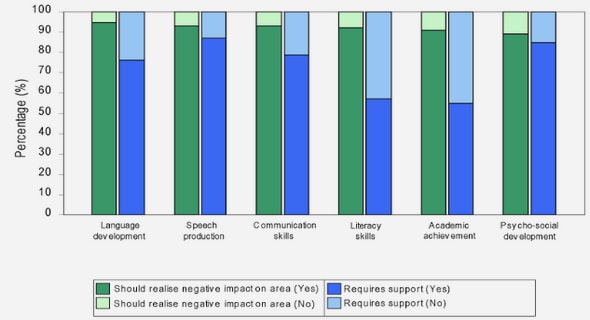(Downloads - 0)
For more info about our services contact : help@bestpfe.com
Table of contents
CHAPTER 1: Introduction
1.1 Context and objectives
1.2 Thesis outline
CHAPTER 2: Polar ice sheets: actors in the climate system, archives of the past
2.1 Ice sheets and climate
2.1.1 Polar ice sheets: big, white and cold
2.1.2 Actors in the climate system
2.1.3 Astronomic theory of climate change
2.1.4 Ice sheets and fast climate change
2.2 Ice core records
2.2.1 A brief history of ice core drilling
2.2.2 Methods for dating ice
2.2.3 What do we learn from ice cores?
2.2.4 Past and future climate
2.3 Inferring past temperature from water isotopes
2.3.1 Stable water isotopes
2.3.2 Isotopic fractionation
2.3.3 Fractionation during precipitation
2.3.4 Fractionation during evaporation
2.3.5 Rayleigh distillation
2.3.6 Principle of isotopic thermometry
2.4 Conservation of the water-isotope signal in snow and ice
2.4.1 Diffusion in the firn
2.4.2 Diffusion in ice
2.5 Modelling ice-sheet evolution
2.5.1 Dynamics of ice flow
2.5.2 Principles of ice sheet modelling
2.5.3 Parameterization of the climate over ice sheets
CHAPTER 3: Three-dimensional tracer modelling
3.1 Motivation
3.2 Transport of provenance variables
3.2.1 Technical context
3.2.2 Tracer principles
3.2.3 Eulerian, Lagrangian, or semi-Lagrangian scheme?
3.3 Specificity of the age–depth relationship
3.3.1 Sources of error
3.3.2 A balance-based interpolation method
3.3.3 Age boundary conditions
3.3.4 Three-dimensional implementation
3.4 Depositional model
3.4.1 An archive like a “birth registry”
3.4.2 Present isotopic distribution
3.4.3 Past isotopic distribution
3.5 Practical application
3.5.1 Tracer transport flow chart
3.5.2 Construction of tracer stratigraphy
3.5.3 Global properties
3.5.4 Average isotopic concentration
3.5.5 Application of tracer modelling
CHAPTER 4: Global stratigraphy of the Greenland Ice Sheet
4.1 Introduction
4.2 Model and experiment
4.2.1 Ice dynamics
4.2.2 Climate forcing
4.2.3 Practical details
4.3 Depositional provenance stratigraphy
4.4 Stratigraphy at ice core sites
4.4.1 Isotopic stratigraphy
4.4.2 Borehole catchment
4.5 Age of Greenland ice
4.5.1 Age of deep ice
4.5.2 Average age of the ice sheet
4.6 Conclusion
CHAPTER 5: Constraints on Greenland ice cores and glacial history
5.1 Introduction
5.2 Validation process and effect of model parameters
5.2.1 Methodology and validation process
5.2.2 Best parameters
5.2.3 Sensitivity of parameters
5.3 Modelling the GRIP records
5.3.1 Age–depth profile
5.3.2 Borehole temperature
5.3.3 Paleotemperature
5.3.4 Paleo-elevation
5.3.5 Ice origin and ice-divide migration
5.3.6 Constraints from GRIP
5.4 Constraints from other Greenland cores
5.4.1 GISP2
5.4.2 Dye 3
5.4.3 Camp Century
5.4.4 NorthGRIP
5.5 Minimal configuration during the Eemian
5.6 Conclusion
CHAPTER 6: Global stratigraphy of the Antarctic Ice Sheet
6.1 Description of the model
6.1.1 Ice dynamics
6.1.2 Climate forcing
6.2 Experimental design
6.2.1 Adjustments near ice core sites
6.2.2 Model spin-up
6.2.3 Validation process
6.3 Depositional provenance stratigraphy
6.3.1 “East–west” profiles
6.3.2 “North–south” profiles
6.4 Deposition age
6.4.1 Age stratigraphy
6.4.2 Age of deep ice
6.4.3 Average age of the ice sheet
6.5 Isotopic stratigraphy at ice core sites
6.5.1 Dome C
6.5.2 Vostok
6.5.3 Dome Fuji
6.6 Conclusion
CHAPTER 7: Simple vs. complex ice flow models for deep Antarctic records
7.1 Introduction
7.2 Prediction of age–depth in an ice core
7.2.1 Ice flow dating model
7.2.2 Age–depth for the ice sheet model
7.3 Depositional conditions for the deep East Antarctic records
7.3.1 Surface mass balance
7.3.2 Ice origin
7.3.3 Paleo-elevation of depositional ice
7.4 Internal ice flow properties at deep ice core sites
7.4.1 Thinning
7.4.2 Velocity profiles at domes
7.4.3 Velocity profiles at Vostok
7.4.4 Simple vs. 3D calculation of velocity
7.5 Discussion and conclusion
CHAPTER 8: Global budget of water isotopes inferred from polar ice sheets
8.1 Introduction
8.2 Conditions for an accurate diagnosis
8.2.1 Ice sheet reconstruction
8.2.2 Deposition rate of water isotopes
8.2.3 Stability of the Antarctic Ice Sheets
8.2.4 Presentation mode
8.3 Volume and composition of the East Antarctic Ice Sheet
8.3.1 Ice volume and sea level
8.3.2 Isotopic composition of the EAIS
8.3.3 Effect of the EAIS on ocean composition
8.4 Volume and composition of the West Antarctic Ice Sheet
8.4.1 Ice volume and sea level
8.4.2 Isotopic composition of the WAIS
8.4.3 Effect of the WAIS on sea water composition
8.5 Volume and composition of the Greenland Ice Sheet
8.5.1 Ice volume and sea level
8.5.2 Isotopic composition of the GIS
8.5.3 Effect of the GIS on sea water composition
8.6 Discussion: ice sheets and sea water composition
8.6.1 Sea level vs. sea water composition
8.6.2 Last Glacial Maximum
8.6.3 In an ice-free world
8.6.4 Interglacials
8.7 Conclusion
CHAPTER 9: Conclusion
9.1 Tracers
9.2 Glaciological results
9.3 Suggestions for future work
REFERENCES


